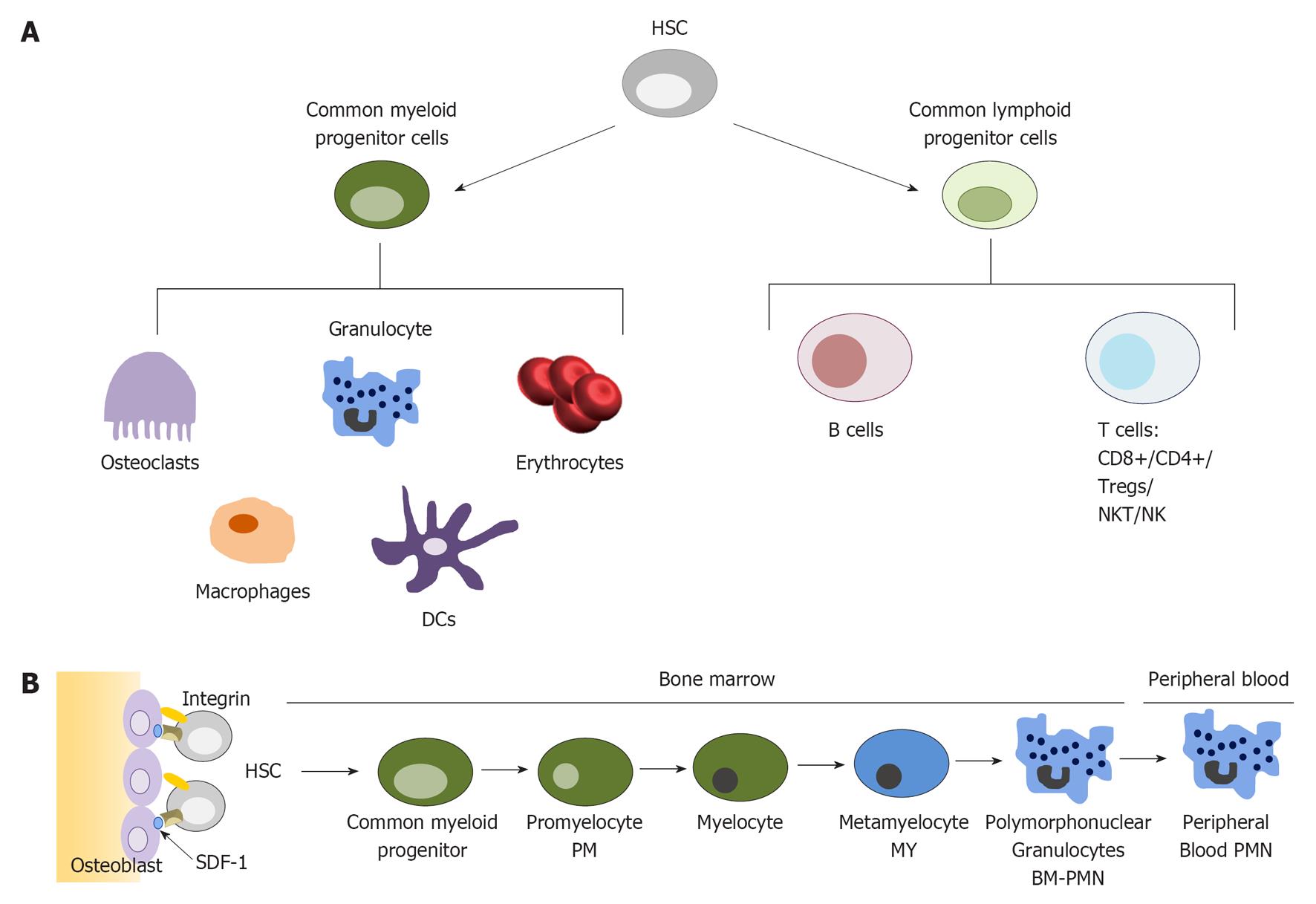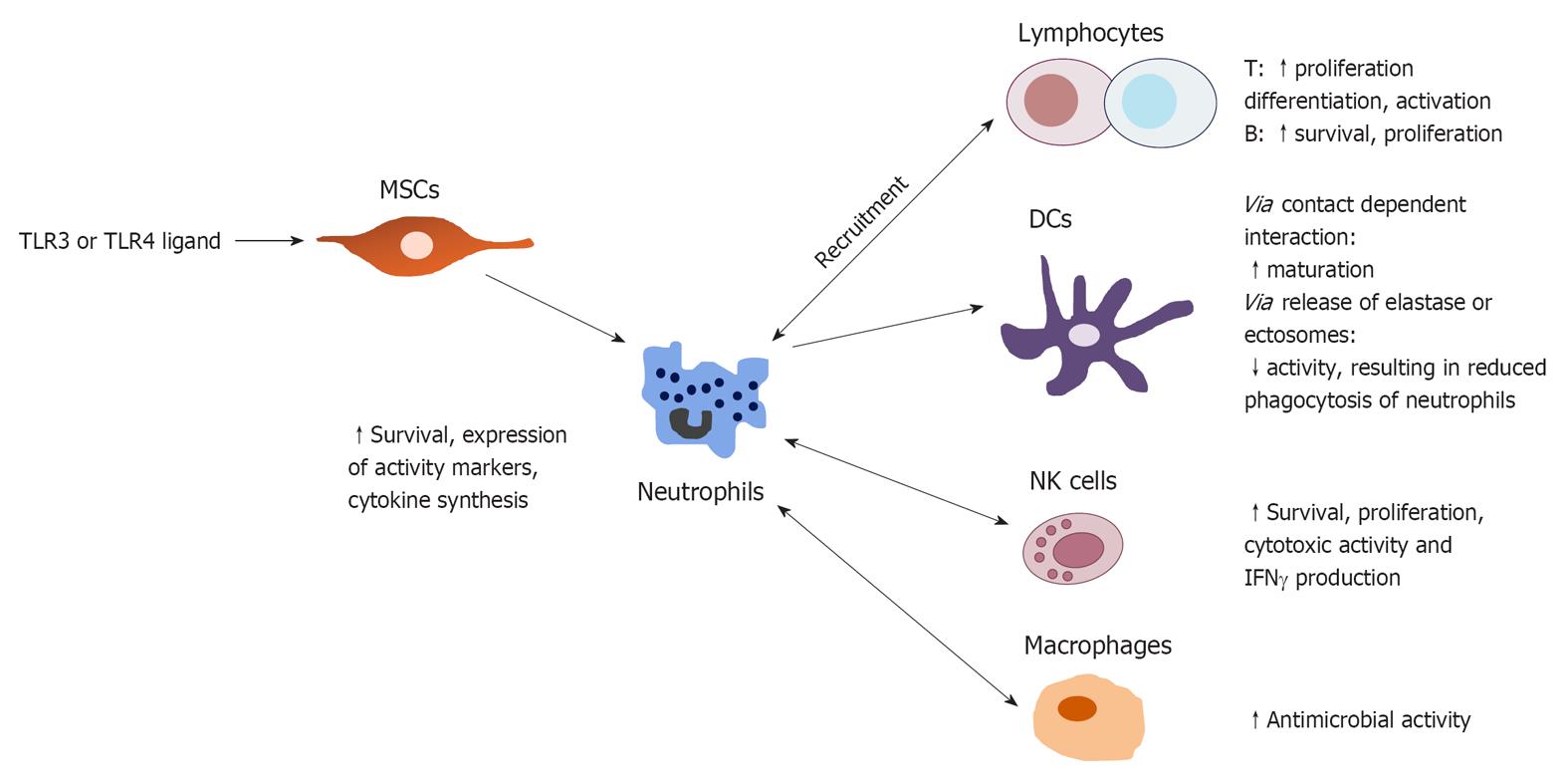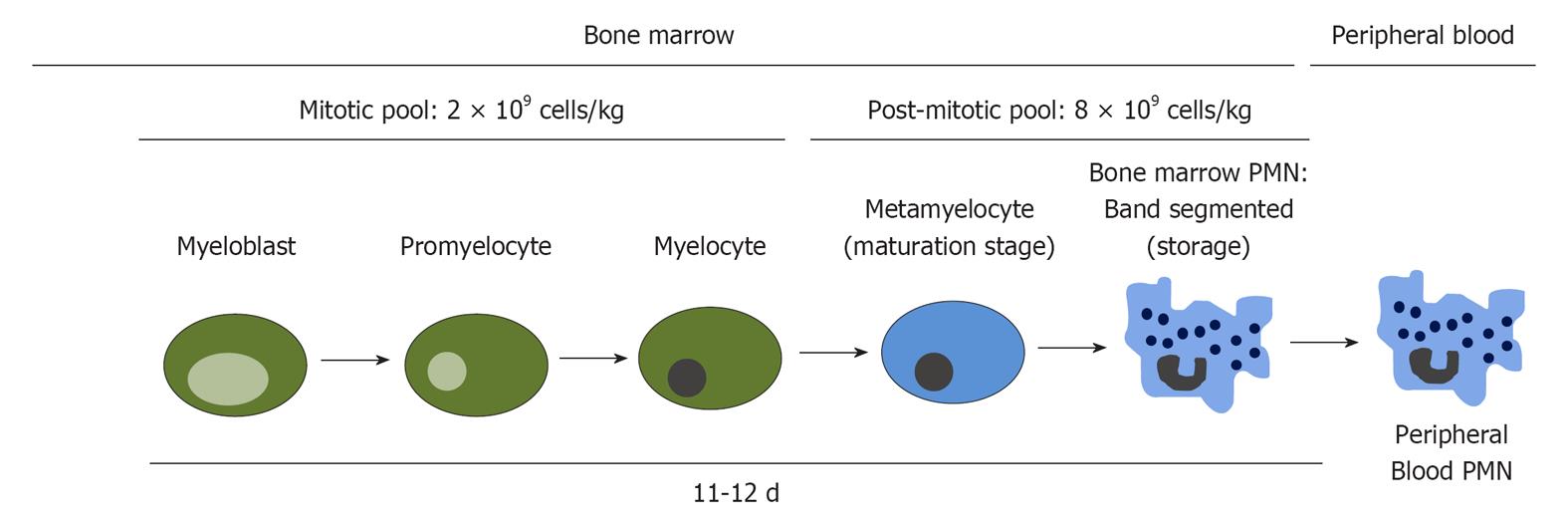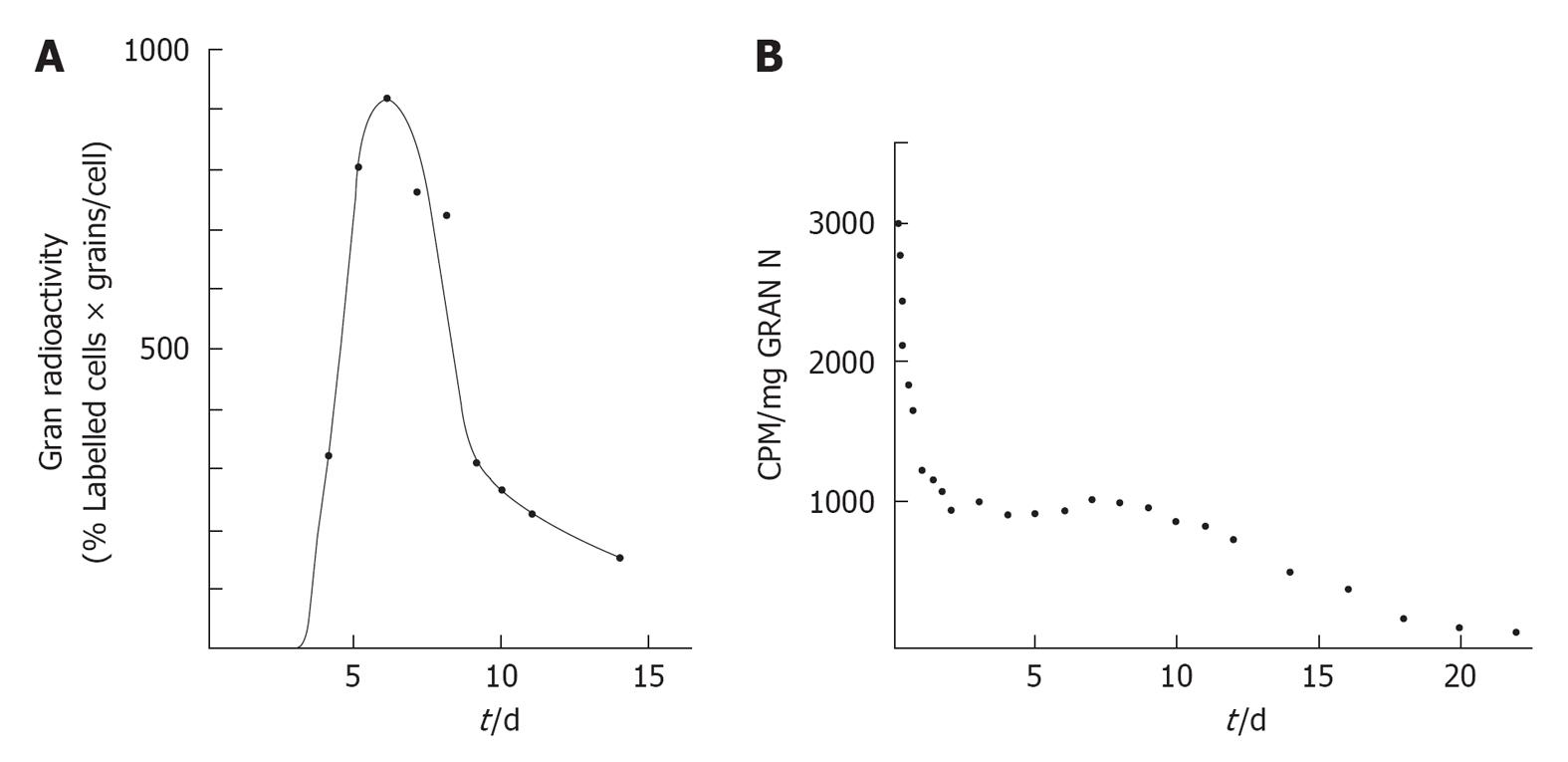Copyright
©2013 Baishideng.
Figure 1 Granulopoiesis process.
A: The production of blood cells from a hematopoietic stem cell. Modified from[131]; B: Neutrophil maturation from the hematopoietic stem cell to mature neutrophils. Modified from[1]. HSC: Hematopoietic stem cell; NK: Natural killer; DCs: Dendritic cells; PMN: Polymorphonuclear leukocyte.
Figure 2 Cellular crosstalk of neutrophils in the tissues and in the lymph nodes.
Modified from[78]. TLR: Toll-like receptor; NK: Natural killer; DCs: Dendritic cells; MSCs: Mesenchymal stem cells; IFN: Interferon.
Figure 3 The marginated pool.
A: Neutrophil pools under homeostatic and inflammatory conditions. All pools remain present, but the pool sizes change significantly; B: The size of the marginated and circulating granulocyte pool can be affected due to exercise or endotoxins or steroids. Modified from[88]. G-CSF: Granulocyte colony stimulating factor.
Figure 4 Neutrophil kinetics of the differentiation towards neutrophils in the bone marrow.
Modified from[106]. PMN: Polymorphonuclear leukocyte.
Figure 5 The kinetics of neutrophil production, the amount of cells that are produced each day, is measured as a rate of turnover of neutrophils in the blood.
A: Decay of radioactivity of blood granulocytes after intravenous injection of 3H-thymidine; B: Decay of radioactivity of blood granulocytes after intravenous injection of 32Di-Isopropylfluorophosphate. Modified from[103].
- Citation: Bekkering S, Torensma R. Another look at the life of a neutrophil. World J Hematol 2013; 2(2): 44-58
- URL: https://www.wjgnet.com/2218-6204/full/v2/i2/44.htm
- DOI: https://dx.doi.org/10.5315/wjh.v2.i2.44













